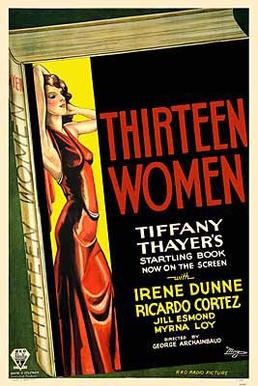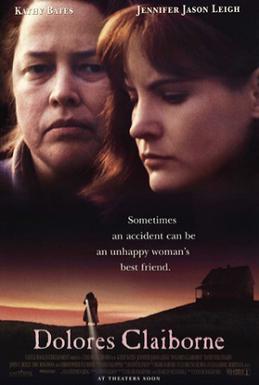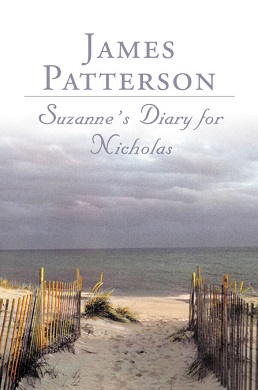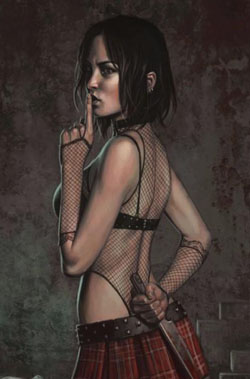
Cujo is a 1981 horror novel by American writer Stephen King about a rabid Saint Bernard. The novel won the British Fantasy Award in 1982 and was made into a film in 1983. Cujo's name was based on the alias of Willie Wolfe, one of the men responsible for orchestrating Patty Hearst's kidnapping and indoctrination into the Symbionese Liberation Army. King discusses Cujo in On Writing, referring to it as a novel he "barely remembers writing at all." King wrote the book during the height of his struggle with alcohol addiction. King goes on to say he likes the book and wishes he could remember enjoying the good parts as he put them on the page.

Desperation is a horror novel by American author Stephen King. It was published in 1996 at the same time as its "mirror" novel, The Regulators, itself published under King's Richard Bachman pseudonym. It was also made into a TV film starring Ron Perlman, Tom Skerritt and Steven Weber in 2006. The two novels represent parallel universes relative to one another, and most of the characters present in one novel's world also exist in the other novel's reality, albeit in different circumstances.

Hilda of Whitby was a saint of the early Church in Britain. She was the founder and first abbess of the monastery at Whitby which was chosen as the venue for the Synod of Whitby in 664. An important figure in the Christianisation of Anglo-Saxon England, she was abbess in several convents and recognised for the wisdom that drew kings to her for advice.

Thirteen Women is a 1932 American pre-Code psychological thriller film, produced by David O. Selznick and directed by George Archainbaud. It stars Myrna Loy, Irene Dunne and Ricardo Cortez. The film is based on the 1930 bestselling novel of the same name by Tiffany Thayer and was adapted for the screen by Bartlett Cormack and Samuel Ornitz.

Laurie Strode is a character from the Halloween series. She first appeared in Halloween (1978) as a high school student who becomes targeted by serial killer Michael Myers, in which she was portrayed by Jamie Lee Curtis. Created by John Carpenter and Debra Hill, Laurie appeared in nine of thirteen films in the series. The character has subsequently been represented in various other media, including novels, video games, and comic books.

Martha Wayne is a fictional character appearing in American comic books published by DC Comics. She is the mother of Bruce Wayne (Batman), and wife of Dr. Thomas Wayne as well as the paternal grandmother of Damian Wayne, the fifth Robin. After she and her husband are murdered in a street robbery, her orphaned son is inspired to fight crime by adopting the vigilante identity of the Batman.
Night World is a series of nine young adult fantasy novels by American author L. J. Smith. In the series, vampires, witches, werewolves, and shape-shifters live among humans without their knowledge, making up a secret society known as the Night World. The society enforces two fundamental laws to prevent discovery: never allow humans to gain knowledge of the Night World's existence, and never fall in love with a human.

Dolores Claiborne is a 1995 American psychological thriller drama film directed by Taylor Hackford and starring Kathy Bates, Jennifer Jason Leigh, Christopher Plummer, and David Strathairn. The screenplay by Tony Gilroy is based on the 1992 novel of the same name by Stephen King. The plot focuses on the strained relationship between a mother and her daughter, largely told through flashbacks, after her daughter arrives to her remote hometown on a Maine island where her mother has been accused of murdering the elderly woman for whom she had long been a care-provider and companion.
Spearfinger, or U'tlun'ta', is a monster and witch in Cherokee legend, said to live along the eastern side of Tennessee and western part of North Carolina. U'tlun'ta is Cherokee for "the one with the pointed spear”. Her right forefinger resembles a spear or obsidian knife, which she uses to cut her victims. Her mouth is stained with blood from the livers she has eaten. She is also known as Nûñ'yunu'ï, which means "Stone-dress", for her stone-like skin. Often she clutches her right hand tightly, because she is hiding her heart and her only weak spot, which is her right palm.

The Pirate Loop is a BBC Books original novel written by Simon Guerrier and based on the long-running science fiction television series Doctor Who. It features the Tenth Doctor and Martha Jones. It was published on 26 December 2007 alongside Peacemaker and Wishing Well. It is also the second Tenth Doctor book to feature space pirates, after The Resurrection Casket.
The Crow is a superhero and the protagonist of The Crow comic book series, originally created by American artist James O'Barr in 1989. The titular character is an undead vigilante brought back to life by a supernatural crow to avenge his murder and death of his fiancée.

Embryo is a 1976 American science fiction horror film directed by Ralph Nelson starring Rock Hudson, Barbara Carrera, and Diane Ladd with a cameo appearance by Roddy McDowall. It deals with the mental and physical consequences of growing a human embryo in an artificial uterus.

Suzanne's Diary for Nicholas is a 2001 novel by American author James Patterson, which argues the importance of balance within one's life. Two interwoven stories are told throughout the novel. The framing story is based on Katie Wilkinson, a New York City book editor, whose relationship with poet Matthew Harrison ends suddenly. During this period, Katie learns about Matt's past through the diary written by Suzanne.

Adam, a novel by author Ted Dekker, was released on April 1, 2008. This book is not directly tied to any others, as many of Dekker's novels are.

Kirsten Gannon is a fictional character from the Australian soap opera Neighbours, played by Nikola Dubois. She made her first appearance during the episode broadcast on 19 June 2007. Kirsten was introduced into the series as the mother of Mickey Gannon and former partner of Ned Parker. As one of Neighbours' recurring characters, Kirsten appeared constantly for more than one year. She is characterised as manipulative and a "trouble maker". Kirsten's stories have included a custody battle over Mickey and her subsequent feud with Janae Timmins. The latter resulted in a blackmail scheme and her various attempts to ruin Janae's relationship with Ned. Writers also created an affair story with Paul Robinson. Dubois has stated that her relationship with Paul showed her character to be a "lonely woman" rather than a "home wrecker". Kirsten's final storylines saw her suffering from severe burns after being caught in a bush fire. The character departed the show on 31 July 2008.

Cassandra "Cassie" Hack is a fictional character that appears as the main protagonist in the Hack/Slash comic books published by Devil's Due Publishing. The character first appears in Hack/Slash: Euthanized, and was created by writer and occasional penciller Tim Seeley.

Sundown is a 1941 American war drama film directed by Henry Hathaway and starring Gene Tierney, Bruce Cabot and George Sanders. It was produced by Jack Moss and Walter Wanger, written by Charles G. Booth and Barré Lyndon, and released by United Artists. Set in British East Africa, the film's adventure story was well received by critics, earning three Academy Award nominations, but it was a failure at the box office.

Split Image is a crime novel by Robert B. Parker, the ninth and final novel in his Jesse Stone series. It was published a month after his death.

I, Madman is a 1989 American supernatural slasher film directed by Tibor Takács and starring Jenny Wright and Clayton Rohner. Its plot follows a Los Angeles bookstore worker who becomes engrossed in a horror novel titled I, Madman, and finds a series of murders resembling those in the book occurring around her. The film's working title was Hardcover, and it was released in some international markets under this name.

Station Eleven is a novel by the Canadian writer Emily St. John Mandel. It takes place in the Great Lakes region before and after a fictional swine flu pandemic, known as the "Georgia Flu", has devastated the world, killing most of the population. The book was published in 2014, and won the Arthur C. Clarke Award the following year.
















